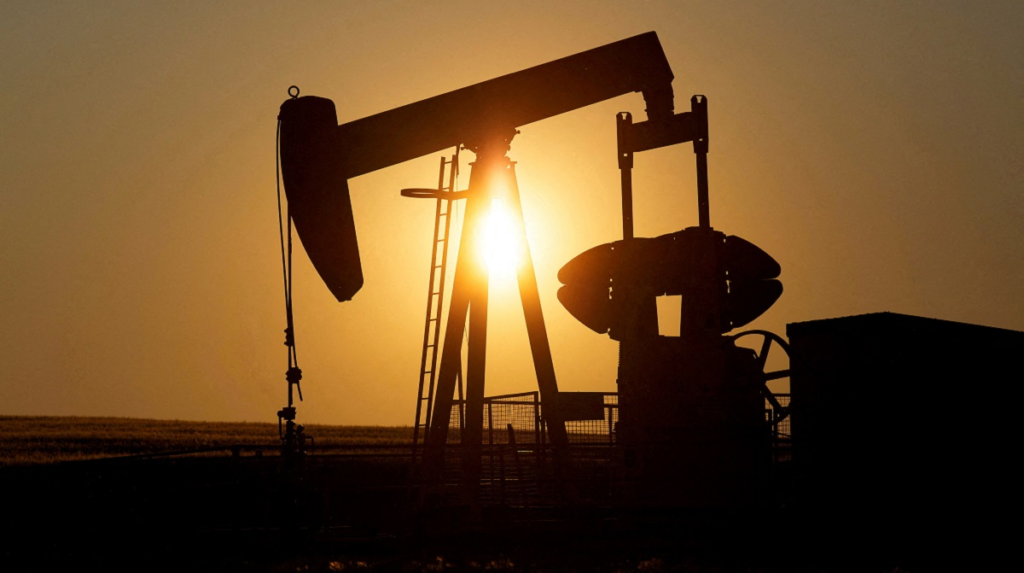In December, the G-7 imposed a $60 a barrel price cap on Russian oil, barring companies in those nations from providing a wide range of services, particular insurance and shipping, if the cargoes were bought above that level.
Widespread breaches of the Group of Seven oil price cap likely took place in Asia in the first quarter, according to a team of researchers who analyzed official data on Russia’s foreign trade alongside shipping information. In December, the G-7 imposed a $60 a barrel price cap on Russian oil, barring companies in those nations from providing a wide range of services, particular insurance and shipping, if the cargoes were bought above that level.
But in the first quarter of this year, almost all the oil from the Pacific port of Kozmino sold for well above $60 and over half the shipments were carried out using some type of G-7 service, according to a study of trade and shipping data by KSE Institute, a part of the Kyiv School of Economics that’s pushing for stiffer enforcement. “The fact that a substantial share of voyages from Kozmino involves Western-owned and/or -insured vessels while essentially all transactions show prices above $60/barrel points to potentially considerable price cap violations,” the researchers said.
The data underpin concern that was raised on April 17 in an alert by the US Treasury that violations could be happening for shipments from Kozmino. While the report suggested ways in which sanctions enforcement could be bolstered, it also painted a bigger picture of plunging prices for Russian oil because of a European Union imports ban, hurting the Kremlin’s access to petrodollars to fund its war in Ukraine.
Russian oil was exported at an average price of $58.62 a barrel in the first three months of the year, the study showed. The average price in the four weeks of December that followed the cap was $73.70. The European Union stopped buying almost any Russian oil at the end of last year and simultaneously joined the G-7’s cap. Europe’s embargo was the driving force behind the depressed prices, rather than the price cap, according to the report’s authors Benjamin Hilgenstock, Elina Ribakova, Nataliia Shapoval, Tania Babina, Oleg Itskhoki and Maxim Mironov.
Prior to the ban, the EU had been the biggest buyer of Urals, Russia’s top export grade. Once the 27-nation bloc’s measures began, Russian barrels had to discount at the point of export in order to win customers in India and China, and freight bills also soared. “Demand conditions changed dramatically, resulting in sharply lower prices,” researchers said.
The price cap was designed to help Russian oil continue to flow and the study found that the sanctions coalition’s strategy accomplished that, while restricting the country’s export receipts and fiscal revenues. A US government official, who requested anonymity because they weren’t authorized to comment publicly, pointed to those conclusions in the report as evidence the price cap was succeeding in its two goals of reducing Russian revenue while keeping markets stable.
The official added that the US would continue to closely monitor reports of possible evasion and communicate with companies involved in shipping oil. The exports analyzed in the report mostly reflected deals where the buyers paid for transport, the cost of which remains extraordinarily high. Urals at the point of import cost about $18 a barrel more than at the point of export price in March, according to data from Argus Media Ltd., whose prices are at the heart of the G-7’s price-cap program.
“We can speculate that a portion of shipment costs may ultimately end up in Russia,” the authors of the report said in a separate comment to Bloomberg about the spread between export and import prices. The research is based on a database of Russian crude oil and oil product exports drawing on data from Russian authorities, statistics from trading partners, information from commercial data providers, investigative reporting, and material provided by the Free Russia Foundation.

Source:financialexpress.com


